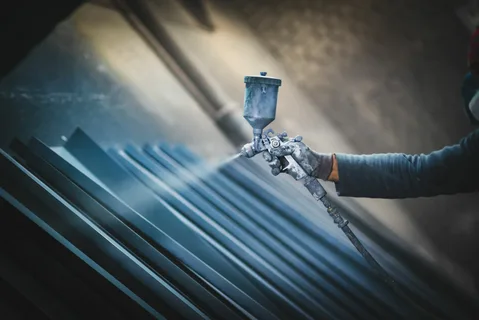The industrial coating market is witnessing substantial growth, driven by the increasing need for advanced materials that offer protection and enhance the durability of critical infrastructure. Among the various coating solutions available, anti-corrosive coatings are gaining prominence, especially in infrastructure projects. As infrastructure across the globe ages and as new construction ventures rise, the demand for anti-corrosive coatings designed to prevent rust and degradation of metal surfaces has never been more urgent.
The Role of Anti-Corrosive Coatings in Infrastructure
Infrastructure projects, from bridges and highways to tunnels, power plants, and oil rigs, face significant challenges from environmental exposure. Exposure to moisture, salt, chemicals, and pollutants accelerates the deterioration of metals, which form the backbone of many infrastructure components. Without proper protection, metal structures can corrode, leading to safety hazards, costly repairs, and shortened service lives.
Anti-corrosive coatings are specifically designed to address these challenges. These coatings create a protective barrier between the substrate (often steel or iron) and the corrosive elements in the environment, preventing oxidation and rust from forming. They are crucial in maintaining the integrity of infrastructure by providing long-lasting protection against water, salt, and other aggressive agents. In addition, these coatings are vital for reducing maintenance needs, minimizing downtime, and enhancing the overall performance of assets in sectors like transportation, energy, and utilities.
Market Growth Driven by Infrastructure Expansion
The increasing demand for anti-corrosive coatings can be largely attributed to the rapid expansion and modernization of global infrastructure. Governments and private investors are committing significant resources to build and refurbish infrastructure, particularly in emerging economies and rapidly urbanizing regions. As cities expand and aging infrastructure requires updates, anti-corrosive coatings have become an essential component in ensuring the long-term durability of these projects.
Government initiatives aimed at maintaining and enhancing infrastructure are another contributing factor to the growth of anti-corrosive coatings. Many countries are investing in major public infrastructure projects, such as the construction of highways, bridges, dams, and airports. As a result, the demand for high-performance coatings that can protect these assets from the elements is growing. Furthermore, increased awareness of the environmental impact of infrastructure and the need for sustainability is pushing for more eco-friendly anti-corrosive coatings, which has driven innovation within the market.
Technological Advancements and Innovation
Advancements in materials science have played a pivotal role in the development of more effective and environmentally friendly anti-corrosive coatings. The traditional zinc-based coatings are being replaced or enhanced by advanced formulations that offer superior corrosion resistance while being more environmentally sustainable. Innovations such as epoxy-based coatings, polyurethane coatings, and inorganic coatings are increasingly being used in infrastructure projects for their enhanced durability and protective properties.
Waterborne anti-corrosive coatings, which emit fewer volatile organic compounds (VOCs), are gaining traction due to their reduced environmental impact. These environmentally conscious formulations are particularly popular in regions with stringent environmental regulations, as they offer the same high level of protection as traditional solvent-based coatings without the associated toxicity or air pollution concerns. The development of nanotechnology-based coatings is also an exciting trend, with the potential to provide even greater resistance to corrosion while requiring less frequent application.
Market Trends and Opportunities
As infrastructure projects continue to grow in scale and complexity, the demand for anti-corrosive coatings is expected to increase. Several market trends indicate a promising outlook for the industrial coating sector, particularly for corrosion-resistant solutions:
-
Focus on Sustainability: With growing concerns over environmental impact, there is a strong shift toward sustainable and eco-friendly anti-corrosive coatings. Coatings with low VOCs, non-toxic ingredients, and longer life cycles are increasingly favored in the market.
-
Aging Infrastructure: Many developed economies are grappling with aging infrastructure that requires significant refurbishment. Anti-corrosive coatings are crucial in extending the lifespan of older bridges, buildings, and transportation systems, which is boosting demand in maintenance and repair markets.
-
Infrastructure Investment: Governments worldwide are committing to infrastructure spending to stimulate economic growth, particularly in emerging economies where rapid urbanization is creating new construction opportunities. This trend is expected to increase the need for protective coatings across various sectors.
-
Focus on Safety and Durability: The emphasis on safety and asset longevity in critical infrastructure is driving the adoption of high-performance anti-corrosive coatings. Corrosion-related failures can result in catastrophic safety issues, making corrosion protection a priority for infrastructure developers and facility managers.
Challenges and Opportunities for Coating Manufacturers
While the growth prospects for anti-corrosive coatings are strong, manufacturers face several challenges. The competitive nature of the market requires continuous innovation to meet the evolving needs of infrastructure projects. Additionally, raw material costs and regulatory requirements are constantly shifting, which can affect the production and pricing of anti-corrosive coatings.



